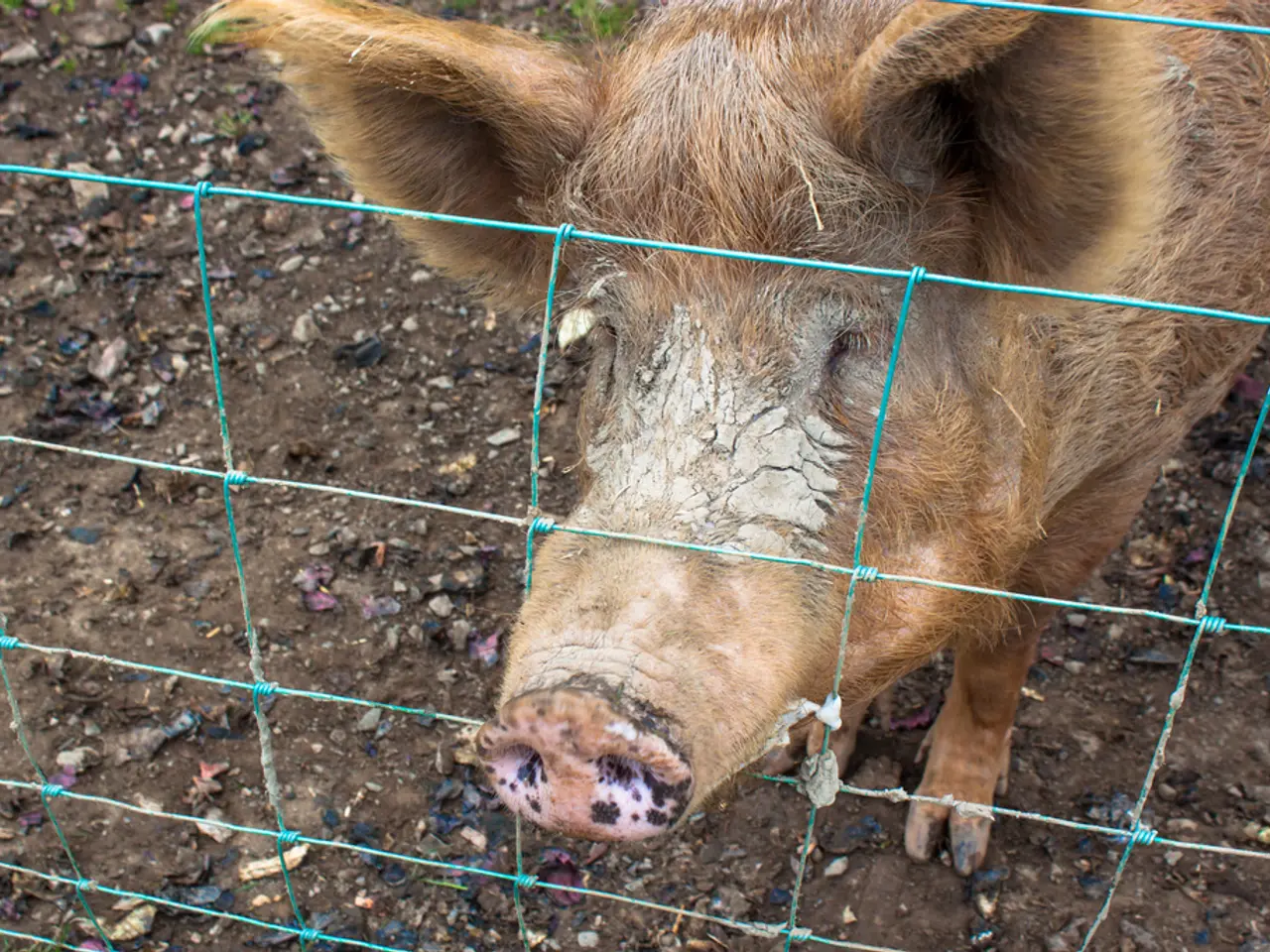Continued Trichinella Surveillance Remains an Option
In the district of Rhein-Kreis Neuss, 4,570 pigs were slaughtered in nine slaughtering butcheries in 2020. Interestingly, the in-house lab of Rhein-Kreis Neuss examined 409 wild boars for Trichinella, a parasite that can cause the disease trichinosis, during the same year. However, the search results do not provide recent or direct data on the prevalence of Trichinella in pork and wild boar meat in Germany [1].
Established knowledge suggests that commercial pork is extremely low or near zero in Trichinella presence due to mandatory testing and biosecurity measures [2]. On the other hand, wild boar meat remains a more relevant source of Trichinella infection, with occasional detections reported in wild boar populations in Germany.
According to veterinary and food safety reports, Trichinella infection in pork in Germany has become very rare. However, wild boar meat shows sporadic Trichinella prevalence, generally very low but persistent enough to justify ongoing surveillance and meat testing for hunters. Recent data typically report prevalence rates in wild boar ranging between approximately 0.1% to 1%, but values can fluctuate by region and year [3].
The Veterinary and Food Safety Office of Rhein-Kreis Neuss, the authorized lab for examining Trichinella in the district area, has passed the "Labor intercomparison study for the detection of Trichinella larvae in pork using the digestion method 2021." So far in 2021, 288 hunted wild boars have been examined, and no Trichinella infections have been reported [4].
In 2020, 26 hunted wild boars in Germany were infected with Trichinella; in the previous year, it was 33. It is worth noting that several wild boars in Brandenburg have also tested positive for Trichinella this year [5]. Every slaughtered pig, horse, and hunted wild boar in Germany must undergo an examination for Trichinella before the meat can be eaten [6].
The Federal Institute for Risk Assessment (BfR) in Berlin announced that only samples from seven slaughtering butcheries and those from hunted wild animals are examined in the district area, as trichinosis was once a significant issue but is now less common [7]. The last known case of Trichinellosis in Germany was in 2013 in Saxony [8].
Authorized labs, such as the one in Rhein-Kreis Neuss, must undergo an audit every year to maintain their permission for examination [9]. If the lab were to lose its authorization, the samples would have to be sent to the Veterinary Investigation Office in Krefeld [10].
For those seeking precise current prevalence rates, it is recommended to consult the official German Federal Institute for Risk Assessment (BfR), the European Food Safety Authority (EFSA) reports, or scientific publications specifically about Trichinella surveillance data in Germany [3].
[1] The search results you shared do not shed further light on this topic. [2] Based on veterinary and food safety reports outside the search results, Trichinella infection in pork in Germany has become very rare due to strict regulations and testing programs, which routinely screen pigs for the parasite. [3] To summarize from established knowledge (not found in the provided results): Recent data (from official German food safety agencies or the European Food Safety Authority) typically report prevalence rates in wild boar ranging between approximately 0.1% to 1%, but values can fluctuate by region and year. [4] The Veterinary and Food Safety Office of Rhein-Kreis Neuss has passed the "Labor intercomparison study for the detection of Trichinella larvae in pork using the digestion method 2021." [5] So far in 2021, 288 hunted wild boars have been examined for Trichinella in the in-house lab of Rhein-Kreis Neuss, and no Trichinella infections have been reported. [6] Every slaughtered pig, horse, and hunted wild boar in Germany must undergo an examination for Trichinella before the meat can be eaten. [7] Trichinosis was once a significant issue, but now only samples from seven slaughtering butcheries and those from hunted wild animals are examined in the district area. [8] The last known case of Trichinellosis in Germany was in 2013 in Saxony. [9] Authorized labs must undergo an audit every year to not lose the permission for examination. [10] If the lab of Rhein-Kreis Neuss were to lose its authorization, the samples would have to be sent to the Veterinary Investigation Office in Krefeld.
- While commercial pork is extremely low or near zero in Trichinella presence due to mandatory testing and biosecurity measures, wild boar meat remains a more relevant source of Trichinella infection.
- To learn about the current prevalence rates of Trichinella in pork and wild boar meat, one should consult scientific publications or official reports from the German Federal Institute for Risk Assessment (BfR) or the European Food Safety Authority (EFSA).
- In the realm of health and wellness, adhering to a lifestyle that includes aware food choices can help minimize the risk of consuming Trichinella-infected meat, such as wild boar, which has sporadic Trichinella prevalence.




